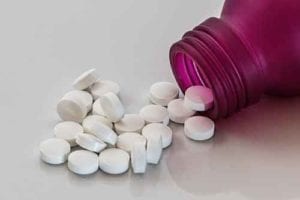Addiction treatment is not a one-size-fits-all model but there is a huge need for CBT in addiction treatment. CBT, or cognitive behavioral therapy, is one of the oldest and most effective models of therapy available. As increasing numbers of alternative types of addiction treatment emerge, CBT continues to prove itself as a tried and true therapy method.
Are you looking for addiction treatment for yourself or a loved one and wondering what to expect? Cognitive-behavioral therapy will most likely play at least some type of role in your treatment plan. What exactly is it and how does it work? It’s effective for helping people with mental illness but how do clinicians use CBT in addiction treatment? Continue
reading to learn more.
Roles of CBT in Addiction Treatment
If you’re at all familiar with therapy modalities you’ve most likely heard of CBT. It’s the most basic and commonly used treatment method for depression and other mental illnesses. While you might know the name, though, a deeper understanding will help you realize the
importance of CBT in addiction treatment.
What is CBT?
CBT stands for cognitive behavioral therapy, a therapy method introduced in the 1960s by Dr. Aaron T. Beck. He spent time searching for and studying similarities between his depressed patients in order to treat them more effectively.
After some time he realized that many of his patients experienced what he
referred to as “automatic thoughts.” They seemed to have little control over these thoughts as they popped into their heads. Their
automatic thoughts usually consisted of negative beliefs about either themselves, their surroundings, or their future.
He worked with his patients to help them pick out and notice their unhealthy automatic thought patterns. By identifying these untrue or unrealistic beliefs they could work to interrupt their automatic thoughts and retrain their mind. Cutting these thoughts out before they settled in helped his patients feel better emotionally and function better as a result.
Ultimately by changing their thoughts, or cognitions, Beck’s patients saw a change in their behavior. Thus cognitive behavioral therapy was born. Over the years since its introduction, thousands of studies continue to show the effectiveness of CBT in addiction treatment, depression, and more.
 Evidence-based treatment is based on positive results.
Evidence-based treatment is based on positive results.
How can CBT help treat addiction?
Although initially created for working with depressed patients, CBT in addiction treatment is another effective way to use it. Many people in early recovery show signs of depression or anxiety while detoxing and during their first few weeks. They might not have a full-blown mental illness but they still experience many of the same symptoms.
People who come into treatment used drugs and alcohol to numb out their feelings and other negative belief patterns for years. Their ideas about themselves and the world might not stem from a true mental illness but are still deeply ingrained. Their therapist can incorporate cognitive behavioral therapy to help them realize and reframe their automatic negative patterns of thought.
CBT for Dual Diagnosis
Some people in early recovery still experience symptoms of mental illness
after the substances clear from their system. These individuals with both
mental illness and a substance or alcohol use disorder have a dual diagnosis. Also referred to as coexisting disorders, dual diagnosis adds an additional layer of difficulty in treating addiction.
Dual diagnosis is incredibly common among people who struggle with addiction. Of the 18.7 million people with a substance use disorder, 8.2 million qualify as having a dual diagnosis. Specialized facilities understand the nuances of
treating people with coexisting disorders. CBT is helpful for these individuals specifically as it addresses both their addiction and their mental
illness.
 8.2 million people live with a dual diagnosis. You are far from alone in your diagnosis.
8.2 million people live with a dual diagnosis. You are far from alone in your diagnosis.
What are some other necessary aspects of addiction treatment?
CBT in addiction treatment is most effective when combined with additional methods of treatment. Addiction is not a straightforward disorder; there are many variables at play. Trying to use a single method of treatment to help someone recover from addiction is like trying to make a meal with
a single ingredient.
Medication-assisted treatment, or MAT, is one of the most popular types of treatment to use alongside cognitive behavioral therapy. Clinicians use
medication-assisted
treatment to manage withdrawal symptoms and cravings when first getting sober. Some people use them only during the detox phase while others prefer to stay on them for their first few months of recovery.

Medication-assisted treatment to manage withdrawal symptoms and cravings when first getting sober.
Suboxone is one of the most common medications used to help patients detoxing from opioids and opiates. They are notorious for being one of the most difficult drugs to kick so the help from MAT makes it easier for clients to focus during other parts of treatment. Naltrexone is another type of medication used to treat both recovering
addicts and alcoholics.
Finding CBT Addiction Treatment
Addiction treatment is the first step towards living a happy, healthy life free from drugs and alcohol. If you’re stuck in the throes of addiction or alcoholism it might seem impossible now but facilities like Hawaii Island Recovery are here to help.
Whether you start in detox or move straight to inpatient rehab or an intensive outpatient program, there is a level of treatment for you. Do you need help finding out whether your insurance covers a stay in rehab? Give us a call today at 877-721-3556 and our admissions office can walk you through the process. Take that first step today!
Get Help Today!
If you or a loved one need help, call Hawaii Island Recovery toll-free right now.
866-390-5070 Hawaii Island Recovery
Hawaii Island Recovery 






